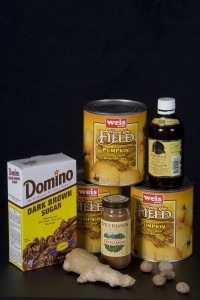Some winter warmers are spiced. In the best cases, the spice melds with the beer and makes it a pleasant drinking (or sipping) experience. In the wort cases, a poorly-spiced beer can be undrinkable. Choosing completely inappropriate spices or, much more commonly, getting the spicing too strong can ruin an other wise great batch of beer.
What Spices to Use
There are many different spices out there. Even a fairly small grocery store will stock at least 40 or so, and a specialty supermarket might stock a couple hundred. If you’re looking to add some spice to your winter warmer, what you should you add? I have three pieces of advice. These are just my opinion, but I think they will steer brewers in the right direction. First, stick to just one spice, or at most a few you know work well together. Don’t just dump your entire spice rack into your brew, willy-nilly. Secondly, think about matching the spice (or spice blend) to the characteristics of your beer. I’ll give a few suggestions below. Finally, stick to recognizable spices and familiar combinations. A winter warmer is supposed to be a comforting beer, not a game of “what the hell is that flavor?” Thinking through common spiced holiday treats may give you an inspiration.
Ideas for Roasty Beers
If you go the roasty/chocolate-y route for a base beer, think about spices that will work well with chocolate, or coffee. Vanilla and mint are two flavors that pair well with chocolate — and don’t forget chocolate itself. You can add it as unsweetened cocoa powder or “dry choc” your beer with roasted cacao nibs. Chocolate and vanilla are the two primary flavors in milk chocolate, so they will do well together in any sweet beer. (And you can add lactose — which is only mildly sweet but brewers yeast can’t ferment it — to boost the sweetness of any beer.) Cinnamon, cardamom and nutmeg work well in coffee, as do a lot of other spices. Check out the coffee aisle in a specialty supermarket for ideas. See especially the spices that go into chai spice blends. And speaking of coffee, it can also work well in beer.
Ideas for Caramel Sweet Beers
If you’ve brewed a base beer with a caramel-sweet edge, anything that complements or contrasts sweetness should work well. Cinnamon would work, as would an apple pie spice blend or a pumpkin pie spice blend. An unusual choice to pair with caramel — in beer, though not in cooking — would be roasted pecans, or brandy.
Ideas for Bready or Biscuity Beers
If you’ve chosen a biscuity base beer, any spices that go well with bread or baked goods is a good place to start. Cinnamon and ginger, of course, go great in cookies and also work well in most beers. Ginger snaps (the cookie) combine molasses with cinnamon, ginger and cloves. You could make a cookie in a glass with this combination. If your beer has rye in it, caraway — often found in rye bread — would be a great choice. And adding wheat malt to any of these beers will add a bready aspect, that should work well. (Likewise toasting some flaked wheat or flaked oats can add a more cookie-like flavor.) Finally, don’t forget the licorice-like spices out there — anise, star anise, fennel, caraway and, of course, licorice root. There are plenty of different kinds of anise cookies out there.
Other Ideas
Adding fruit to a winter warmer is not common, but think of the fruits that commonly appear in fruitcakes. (Or just go with cherries.) This should work in almost any base beer. Likewise, consider if adding some liquor — brandy, whiskey, rum (spiced or not) or any flavored spirit — might make a nice beverage.
How Much to Add
Unfortunately, most spices do not come labelled with an indicator of their strength, as hops are labelled with an alpha acid rating. When adding spice to your winter warmer, it pays to look around at as many recipes as possible and see the amount that is usually added for that spice. It is always better to add too little spice than too much. In many cases, you can touch up an underspiced beer by making an alcohol extract or “dry spicing” the beer if your beer is kegged. In the case of an overspiced beer, your only option is to rebrew the base beer and blend it back into the too spicy beer. Brewing a spiced beer of your own creation is always going to involve some research into possible spicing levels and perhaps brewing a test run first to tweak all the flavors. (The example beer I posted yesterday sidesteps this problem by using a spice blend of a known strength.)
Serving Suggestions
If you’ve come up with a great winter warmer, you may want to think about how to serve it, especially if you serve the beer at a holiday gathering. One obvious suggestion is to pair the beer with food that either complements or contrasts the beer well. This can be as simple as presenting the beer glass on a plate and putting a piece of chocolate, a cookie or a mint on the plate. Likewise, sometimes the beer can be garnished — for example with a mint leaf or by using a cinnamon stick as a stirrer. Finally, if you use a spice that tastes good on it’s own, and isn’t too strong, consider coating the rim of glass with it. I’ve seen this done with cinnamon beers. You could also use powdered sugar, or a blend of powdered sugar and one of your spices.
Of course, some frowning beer purists might turn up their noses at these suggestions, and that’s fine. I think that it’s fun to try something unusual, every now and again, especially with a special beer. So I just thought I’d throw out those suggestions for your consideration.



Speak Your Mind